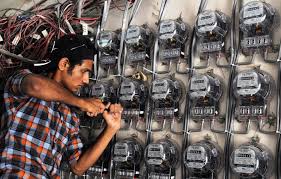Limassol June 8 2022: Moody’s Investors Service (“Moody’s”) has today affirmed the B3 long-term deposit ratings of five Pakistani banks: Allied Bank Limited (ABL), Habib Bank Ltd. (HBL), MCB Bank Limited (MCB), National Bank of Pakistan (NBP) and United Bank Ltd. (UBL).
As part of the same rating action Moody’s has changed the outlook on the banks’ long-term deposit ratings to negative from stable. The rating agency has also downgraded the long-term foreign currency Counterparty Risk Ratings of ABL, MCB and UBL to B3 from B2; these ratings are now constrained by Government of Pakistan’s foreign currency country ceiling, which was lowered to B3 from B2.
Today’s rating actions follow Moody’s decision to change the Government’s of Pakistan’s B3 ratings to negative from stable on 2 June 2022, and also lower the country’s local and foreign currency country ceilings to B1 and B3, from Ba3 and B2, respectively. The negative outlook on the sovereign is driven by Pakistan’s heightened external vulnerability risk and uncertainty around the sovereign’s ability to secure additional external financing to meet its needs.
RATINGS RATIONALE
According to the rating agency, the affirmation of the five Pakistani banks’ ratings reflects their stable, deposit-based, funding profiles and adequate liquidity. Around 12% of assets are held as cash and interbank placements and an additional 45% are invested in government securities, a large proportion of which can be repo’ed with the central bank in case of need. Pakistani banks also display a resilient profitability, with the 2021 systemwide return on assets at 1.0%, while growing financial inclusion and other government initiatives are boosting lending opportunities. These strengths are balanced against the still high asset risks given the vulnerable operating and macro conditions, with the 2021 systemwide non-performing loans (NPLs) at 7.9% of gross loans; and modest capital buffers, with the 2021 systemwide equity-to-assets ratio at 6.3%.
According to the rating agency, the negative outlook on the bank ratings reflects 1) the rated banks’ sizable holding of securities holdings, predominantly sovereign debt securities, at between 5-8 times their shareholders’ equity, which links their creditworthiness to that of the government; and 2) the risk of a further weakening in the government’s capacity to support the banks in case of need. The latter is particularly relevant for National Bank of Pakistan and Habib Bank Ltd., whose ratings incorporate one notch of government support uplift. More broadly, all five banks’ deposit ratings of B3 are at the same rating level of the government, and a potential weakening in the government’s credit profile will therefore translate to a weaker credit profile for the banks.
FACTORS THAT COULD LEAD TO AN UPGRADE OR DOWNGRADE OF THE RATINGS
Any upward rating pressure on the Pakistani banks’ ratings is limited given the negative outlook. The banks’ outlook could change back to stable if the sovereign rating outlook is stabilised and if the banks maintain their resilient financial performance.
Downward pressure on banks’ ratings would develop following a downgrade of the sovereign rating, reflecting the high interlinkages between the banks’ credit profile and that of the government, and also signaling a reduction in the government’s capacity to extend financial support to banks in case of need. Downward pressure on the BCAs of individual banks could also develop from a deterioration in their financial metrics – and specifically their asset quality, profitability, and capital adequacy – but we consider this a low probability event at this stage.










